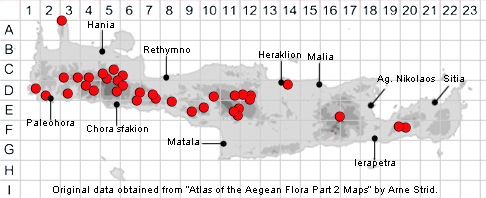SPECIES DESCRIPTION
HYPERICUM TRICHOCAULON
Family and Genus:- See- GUTTIFERAE/Sect. DROSOCARPIUM
Common Names:- None
Homotypic Synonyms:- None
Meaning:- Hypericum (Gr) Above-pictures. A name used by the Greek physician
and botanist Dioscorides for its use over shrines to repel evil spirits.
Trichocaulon (Gr) With a hairy-stem.
Stems:-
1) 5-25(-45) cm, procumbent or ascending, slender, sometimes rooting at the base.
Leaves:-
1) 5-11(-14) mm, ovate-oblong to linear, sessile or shortly petiolate, margins entire.
Flowers:-
1) May have a reddish underside to the otherwise yellow petals.
2) Sepals, obtuse, black-glandular-denticulate to entire.
3) Sepals and petals, sometimes with black dots or streaks scattered over the
whole surface.
Fruit:-
1) Capsule, sometimes with vittae, and with faint, round elongated vesicles or
almost smooth.
Key features:-
1) Sepals, entire or glandular-denticulate or fimbriate.
2) Leaves, 5-14 mm, smooth.
3) Petals, 6-12 mm.
4) Seeds, longitudinally grooved.
Habitat:- Rocky and stony slopes with open dry shrubby vegetation, rock ledges
and flat clayey areas. (0-) 300-1700(-2000) m.
Distribution:- Endemic to Crete, occurring mainly in the Lefka Ori, Kedros and
Psiloritis massifs, with observations from both Dikti and Afendis Kavousi.
Flowering time:- Mid-Apr to June.
Photos by:- Fotis Samaritakis
